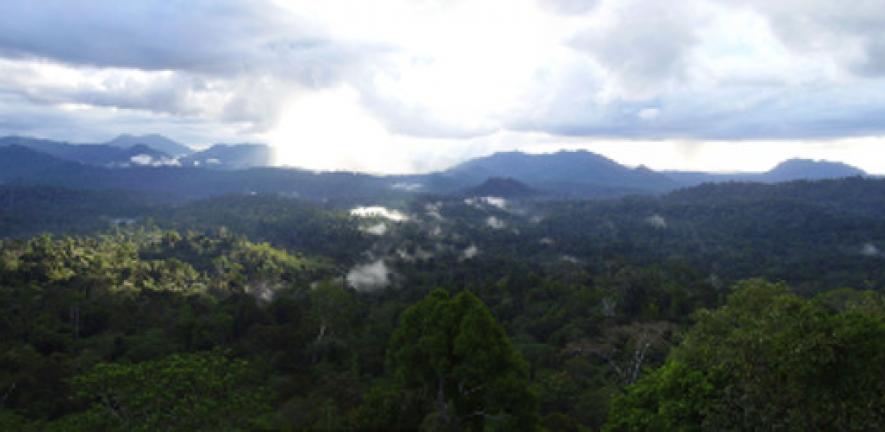
Pollution on the move – East Asian human activities affect air quality in remote tropical forests
New analysis by Department of Chemistry researchers John Pyle, Neil Harris, Andrew Robinson and former graduate student Matt Ashfold shows that pollution from human activity in East Asia is having a negative effect on air quality in tropical rainforests thousands of kilometres away, and could harm the ozone layer if levels continue to increase.
Researchers from the UK and Malaysia have detected a human fingerprint deep in the Borneo rainforest in Southeast Asia. Cold winds blowing from the north carry industrial pollutants from East Asia to the equator, with implications for air quality in the region. Once there, the pollutants can travel higher into the atmosphere and impact the ozone layer.
The research was published the 31st of March in the open access journal Atmospheric Chemistry and Physics.
Rainforests are often associated with pure, unpolluted air, but in Borneo air quality is very much dependent on which way the wind blows. “On several occasions during northern hemisphere winter, pockets of cold air can move quickly southwards across Asia towards southern China and onward into the South China Sea,” said lead author Matthew Ashfold, who conducted the research while at the Department of Chemistry, and who is now based at the University of Nottingham Malaysia Campus.
In a new study, the researchers show that these ‘cold surges’ can very quickly transport polluted air from countries such as China to remote parts of equatorial Southeast Asia. The pollution travels about 1000 km per day, crossing the South China Sea in just a couple of days.
The researchers were initially looking for chemical compounds of natural origin: they wanted to test whether the oceans around Borneo were a source of bromine and chlorine, compounds which can affect stratospheric ozone levels. They designed their experiments to measure these gases, but also detected another gas called perchloroethene, or perc, in the air samples they collected from two locations in the Borneo rainforest. Perc is a common ‘marker’ for pollution because it does not have natural sources.
In order to find out where the man-made gas came from, and where it might go, the researchers used a UK Met Office computer model of atmospheric transport to look back in time and determine where the collected air samples had travelled from. The experiments suggest the high levels of perc in the air samples were influenced by East Asian pollution.
Perc is produced in a number of industrial and commercial processes, such as dry cleaning and metal degreasing, and exposure to large amounts (above about 100 parts per million) can affect human health. While global emissions of perc have declined in the past 20 years or so, it is not clear whether this has been the case in East Asia, where air pollution has increased over the same period.
The levels of perc measured in Borneo are low, at a few parts per trillion. But since the gas does not occur naturally, even small concentrations are a sign that other more common pollutants, such as carbon monoxide and ozone, could be present. Ozone, for example, can damage forests in high concentrations, as it reduces plant growth.
The team’s measurements showed the amounts of perc varied strongly over the course of about a week, and models they analysed indicated this variation to be related to similar changes in carbon monoxide and ozone. During the one cold surge event the team studied in detail, levels of these pollutants over Borneo appeared to be double typical levels.
But diminished air quality in the remote rainforest is not the only way East Asia pollution affects the tropics. “The atmosphere over Southeast Asia and the Western Pacific is home to unusually strong and deep thunderstorms during the northern hemisphere winter. Because of this, the region is an important source of air for the stratosphere,” said Ashfold.
In their study the researchers show that, once in the deep tropics, the polluted air is lifted towards the upper atmosphere. This can introduce a range of industrial chemicals with atmospheric lifetimes of just a few months to the stratosphere, which could have a potentially negative impact on the ozone layer.
“This works shows how quickly increasing pollution in southeast Asia can reach the Borneo rainforest and even the upper atmosphere,” said Dr Neil Harris of the Department of Chemistry, one of the paper’s co-authors. “It means that short-lived compounds, including some ozone-depleting substances, can reach the ozone layer within a couple of weeks. This effect could become more important if emissions of these pollutants continue to increase. At a simple level, it still amazes me how connected our atmosphere is.”

